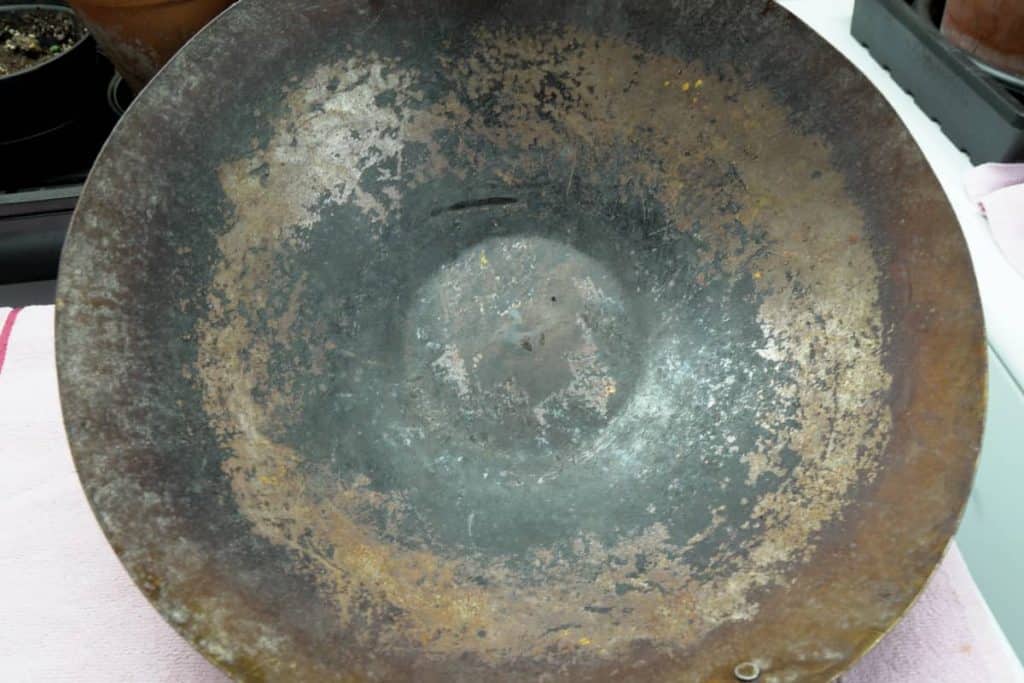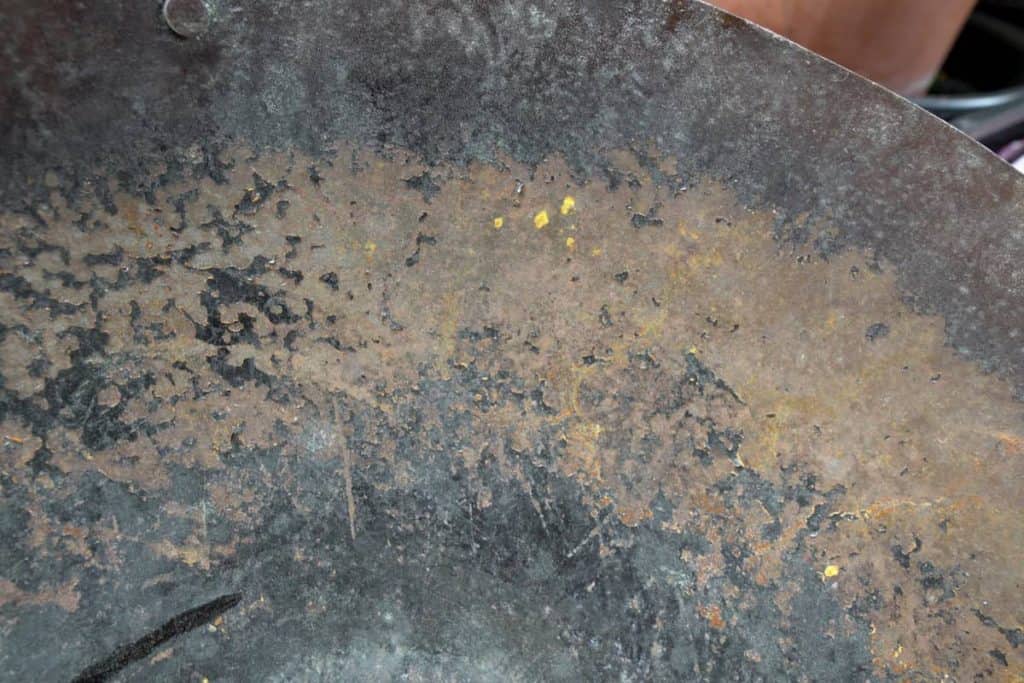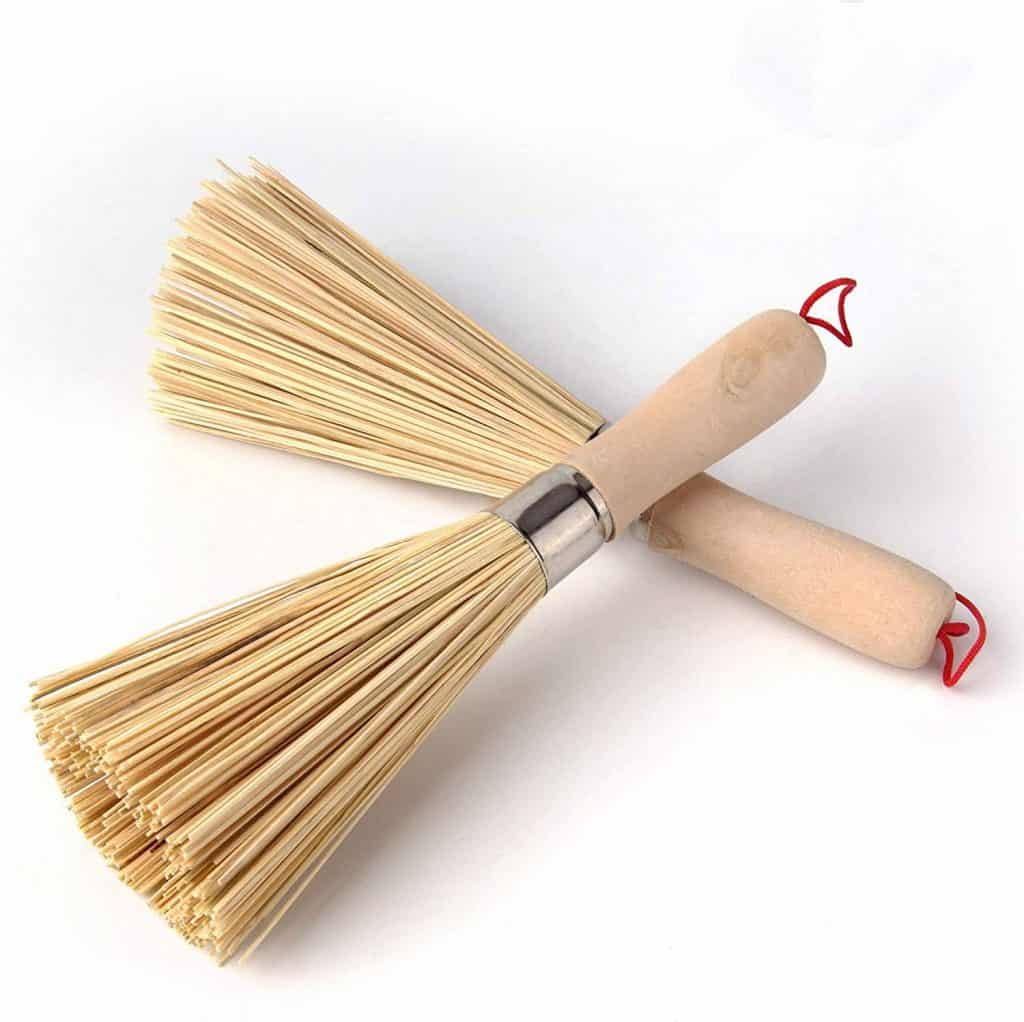
If you have a wok with rust, removing it is a relatively simple process. The simplest method involves removing the rust and then seasoning the pan and storing it correctly to prevent rust formation in the future. If you’re unsure how to clean your rusted wok, these are the necessary steps to use.

Remove the Current Rust
Using a ball of coarse steel wool, rub the rust off gently until completely removed. Once the coarse steel wool has been used switch to a finer grade of steel wool. Rinse the pan in hot water periodically to help with this process. When the area feels smooth and even, rub with fine sandpaper. Dry the pan entirely and put on a burner set at moderate heat. When the pan is hot and dry, turn off the heat and allow to cool.
Here are Some Recommended Steel Wool Products for Cleaning Your Wok
Season the Wok
Now that your wok is rust-free take steps to keep it from rusting again by seasoning it. There are a few different methods you can use.
Pour a tablespoon of vegetable oil into the pan. Using a paper towel, spread the oil over all surfaces. Add additional oil to cover the wok’s bottom and set it at moderate heat until the oil is hot but not smoking. Remove the wok from the heat and swirl the oil inside to cover the bottom and sides.
Add a small amount more oil and set in the oven at 250 degrees. Heat for an hour and then turn off the oven but leave the pan inside for the night. Remove and then wipe off any excess oil. Store in a dry place when not in use.
The second method involves using an unsalted solid fat such as lard or shortening. Rub the cold, dry pan with the fat and then heat slowly over low heat. When the wok is very hot, turn off the heat but leave the pan in a place. After the pan is cold again, rub the excess fat into the pan or wipe off.
Preventing Rust Formation
Rust can occur on a wok if it’s not dried thoroughly after each use or not stored properly. This is more common in new woks that have not been seasoned yet, although it can also happen to older ones that are used infrequently. To prevent your wok from rusting, avoid using any abrasive material to clean it with cooking. It’s best to clean your wok with a gentle cleanser and bamboo brush or a soft sponge.
After using the wok, dry very well and store in a dry place away from moisture. Some cooks like to oil their woks after each use. Using paper towels to add a small amount of oil helps to avoid rust from occurring again.
Use these tips to get your wok looking as good as new. It may take a few times cooking with it for the wok to return to normal, but you can continue using it as much as you want. As the patina of the wok develops over time, you’ll be contributing to it staying rust-free.
Recommended Reading
How to Clean a Cast Iron Wok
Here is a easy step-by-step tutorial on how to clean your cast iron wok. No special tools or dangerous cleaning chemicals are needed!
Why Use a Wok With a Round Bottom?
Round-bottomed carbon steel and cast iron woks are the preferred woks that are used by professional chefs. Round-bottomed woks are made of carbon steel, cast iron or stainless steel.
How to Cook Rice in a Wok
Fried rice is simple to make using a wok if you follow a few simple rules. It is a great way to use up leftovers. Couple that with the rules on making fried rice, and you get a delicious meal.
How to Season a Wok That Actually Works!
Knowing how to season your wok is the first step necessary in learning how to use your wok. If you follow these instructions you will be able to season you wok the correct way.
Why Use a Wok With A Flat- Bottom?
Flat-bottomed woks are more stable on a flat surface than a round-bottomed wok.Flat-bottomed woks distribute heat to the bottom of the pan more evenly than round-bottomed woks, if used on a flat cooking surface.
How to Clean a Wok with Burnt Food
The best way to clean stuck-food on your wok is to use a plastic credit card to scrape off the food. By using this method, you will find that the credit card will conform to the sides of your wok and cause no damage to the patina.
